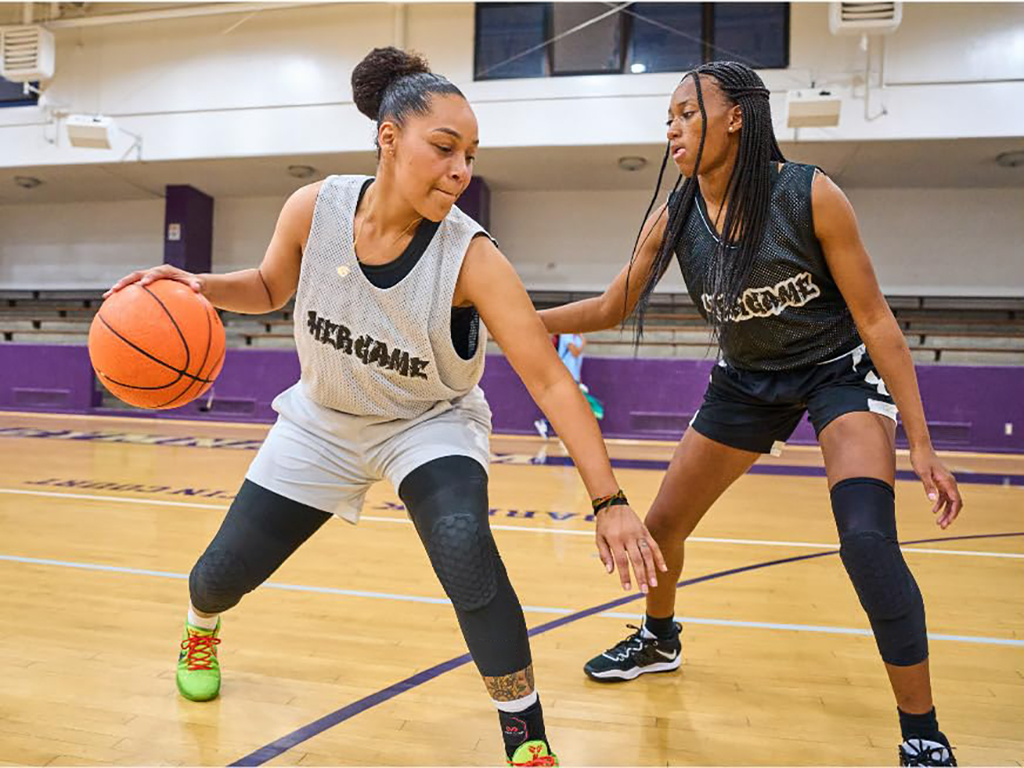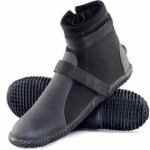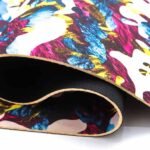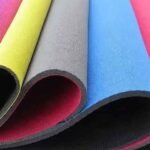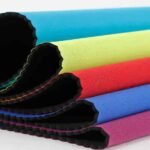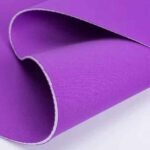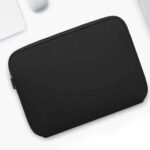Have you ever found yourself experiencing knee discomfort during daily activities or sports, wondering if there’s a simple solution to offer some relief and support? Perhaps you’ve considered investing in a knee brace but aren’t sure if it will truly help. This is a common dilemma. Knee pain and instability can stem from many sources, including injury, overuse, arthritis, or just the wear and tear of everyday life. Searching for a straightforward, non-invasive method to ease discomfort and enhance stability often leads many people to explore neoprene knee braces. But do they really work?
Yes, neoprene knee braces can be effective tools for providing support, enhancing warmth and circulation, and aiding in overall joint stability. Their value lies not only in the supportive properties of neoprene material but also in the comfort, versatility, and customization these braces can offer. Let’s take a closer look at what neoprene knee braces are, how they function, and what to consider before choosing one.
Let me share a quick story. I once met a recreational runner who struggled with mild knee discomfort. After trying various remedies, he slipped on a neoprene knee brace one morning before a light jog. He found that it offered gentle compression and warmth, making his run more comfortable. Though anecdotal, stories like his are common. They illustrate how a seemingly simple product can improve one’s experience with movement.
What Are Neoprene Knee Braces?
Neoprene knee braces are supportive devices designed to fit around the knee joint, providing compression, warmth, and sometimes additional stabilization for the knee’s ligaments, tendons, and soft tissues. They are constructed from neoprene, a synthetic rubber known for its elasticity, durability, and insulating properties. Neoprene is often chosen because it can provide a snug yet comfortable fit without restricting a person’s range of motion too severely.
In essence, a neoprene knee brace:
- Offers mild to moderate compression around the knee joint.
- Helps maintain warmth, which can be beneficial for circulation and flexibility.
- Is flexible enough to move with your body yet stable enough to offer support.
Many neoprene knee braces feature adjustable straps or closures, allowing for a customized fit. Some may include additional components like hinges or patella stabilizers, depending on the intended use.
Dive Deeper: Material and Construction
Neoprene is composed of closed-cell foam, trapping tiny pockets of gas that provide insulation and buoyancy. When used in knee braces, this structure helps retain body heat around the joint. The thickness and quality of neoprene can vary. High-grade neoprene is more resilient and provides consistent compression over time. Reinforced stitching, anatomical shaping, and thoughtful seam placement all enhance comfort and prevent chafing. Some premium models integrate breathable panels or sweat-wicking linings to reduce moisture accumulation and skin irritation.
How Do Neoprene Knee Sleeves Work?
Neoprene knee sleeves, a subset of neoprene knee braces, are generally simpler devices. They slip onto the leg, covering the knee joint without hinges or complex adjustments. Their primary function is to provide compression and warmth. The compression offered by a knee sleeve can help reduce swelling and improve proprioception—your body’s awareness of joint position.
Key aspects of how knee sleeves work:
- Compression: By applying gentle pressure, they help stabilize the knee and support the joint’s soft tissues. This can reduce discomfort and increase confidence in movement.
- Warmth and Circulation: The retained heat around the knee can improve blood flow, potentially easing stiffness and enhancing joint mobility.
- Enhanced Proprioception: Feeling the gentle pressure of the sleeve can improve knee joint awareness, assisting in maintaining proper form during activities.
Dive Deeper: Supporting Soft Tissues
When you engage in activities like running, squatting, or jumping, your knees experience stress. Sleeves provide a subtle reminder that can help you maintain proper knee alignment. While they don’t offer rigid support, they can be beneficial for individuals with mild discomfort or those looking to maintain warmth and knee health as part of their prevention strategy.
Are Neoprene Knee Braces Good?
Determining if neoprene knee braces are “good” depends on what you’re seeking. They are widely regarded as helpful for mild to moderate knee issues, providing comfort, warmth, and support without overly restricting movement. They are popular among people recovering from minor injuries, dealing with chronic conditions like osteoarthritis, or those who simply want to prevent discomfort during exercise.
Pros:
- Versatile and suitable for various activities.
- Generally comfortable and easily adjustable.
- Can be worn under clothing discreetly.
- Non-invasive and relatively affordable compared to medical-grade orthotics.
Cons (in a relative sense):
- May not offer the rigid support needed for severe ligament injuries.
- Effectiveness can vary depending on fit and quality of the brace.
Dive Deeper: The Role in Injury Prevention and Recovery
While neoprene knee braces can help stabilize the knee and provide psychological reassurance, they are not magic cures. They often work best in conjunction with proper exercise, physical therapy, and medical guidance. They can be a piece of the puzzle, helping users stay active while addressing mild discomfort or preventing minor aggravations.
Is There a Downside to Wearing a Knee Brace?
Although knee braces, including neoprene models, are generally safe, some potential downsides exist:
-
Overreliance: Using a knee brace as a crutch may lead some individuals to avoid addressing underlying issues, such as muscle imbalances or poor movement patterns. Over time, this reliance could hinder long-term improvements.
-
Improper Fit or Quality: A poorly fitted or low-quality knee brace might cause discomfort, chafing, or reduced circulation. Ill-fitting braces can slip out of place, proving more distracting than helpful.
-
Limited Support for Severe Injuries: Neoprene braces typically provide mild to moderate support. They may not be sufficient for severe ligament tears or significant instability, where a more rigid or specially designed brace may be required.
-
Possible Skin Irritation: For some individuals, prolonged wear in hot, humid conditions might cause skin irritation or sweating beneath the brace.
Dive Deeper: Balance and Guidance
It’s essential to balance the use of a knee brace with professional advice. If you have persistent or severe knee pain, consulting a healthcare provider or physical therapist is crucial. They can determine whether a neoprene brace is appropriate or if another intervention is needed.
What Is the Difference Between a Knee Brace and a Neoprene Knee Sleeve?
The terms “knee brace” and “knee sleeve” are sometimes used interchangeably, but there are distinctions:
-
Knee Sleeves: Typically made from neoprene or similar materials, knee sleeves are tube-like garments that slip over the knee. They provide compression, warmth, and proprioceptive cues without mechanical support features.
-
Knee Braces: Can come in various forms. Some braces incorporate hinges, straps, or rigid materials to stabilize the joint more significantly. Neoprene knee braces might also feature additional straps or open patella designs to target specific areas of support.
Dive Deeper: Matching the Device to the Need
Choosing between a sleeve and a brace depends on your goals. If you need mild compression and warmth, a sleeve might suffice. If you require more targeted support—such as patellar stabilization or joint realignment—a brace with added structure could be more appropriate.
What Are the Key Features of a High-Quality Neoprene Knee Brace?
When selecting a neoprene knee brace, certain features distinguish high-quality products from mediocre ones:
- Material Quality: Look for high-grade neoprene that maintains its elasticity and compression over time.
- Reinforced Stitching: Durable construction prevents fraying and ensures a longer product lifespan.
- Adjustable Straps or Closures: Allows you to fine-tune compression levels and achieve a secure fit.
- Ergonomic Design: Contoured shapes and specific patterns help the brace conform to your anatomy, reducing slippage and improving comfort.
- Additional Support Elements: Some braces include hinges, gel inserts, or patella buttresses to provide extra stability or relieve pressure on the kneecap.
Dive Deeper: Testing and Certifications
Brands that invest in quality control, material testing, and compliance with relevant standards (e.g., ISO or CE certifications) often deliver more reliable products. Ask about wear tests, user feedback, and sample evaluations. As a buyer—especially if you are a brand, wholesaler, or retailer—partnering with a factory that has proven experience in manufacturing neoprene knee braces can ensure consistent quality and long-term satisfaction.
Do Neoprene Knee Braces Improve Circulation and Warmth?
One of neoprene’s most notable characteristics is its insulating property. By retaining body heat around the knee joint, neoprene braces help maintain a warm environment that can improve local blood flow. Enhanced circulation might help reduce stiffness and discomfort, especially in cooler environments or for individuals with conditions like arthritis that benefit from joint warmth.
How it works:
- Thermal Retention: The neoprene traps body heat, keeping the knee joint warm.
- Increased Blood Flow: Warmth can encourage better circulation, delivering nutrients and oxygen to the tissues.
- Reduced Stiffness: Warm muscles and soft tissues are more pliable, potentially decreasing tension and discomfort.
Dive Deeper: Long-Term Comfort
The warmth provided by a neoprene brace can also offer psychological comfort. Feeling “supported and warm” often translates to enhanced confidence, particularly during activities that stress the knee joint. However, it’s important to note that while increased warmth can be beneficial, prolonged excessive heat and sweating should be monitored. Some braces include breathable panels to address this issue.
Are Neoprene Knee Braces Suitable for Various Activities and Sports?
Neoprene knee braces are popular among athletes and active individuals because they’re versatile. They can be used in a broad range of activities, including:
- Running and Jogging: Mild compression can support the knee during repetitive impact, especially helpful for those prone to mild irritation.
- Weightlifting: Maintaining knee alignment under load is essential. A neoprene brace provides proprioceptive cues, reminding lifters to keep proper form.
- Basketball, Volleyball, and Tennis: Rapid lateral movements and sudden stops put stress on the knees. The brace can help stabilize the joint and maintain confidence during quick changes in direction.
- Golf, Cycling, and Hiking: Even low-impact activities can benefit from a bit of support and warmth, reducing fatigue and discomfort over extended periods.
Dive Deeper: Matching Activity Intensity and Brace Type
For high-impact sports or severe joint instability, a more specialized brace with hinges or reinforced support may be necessary. However, for recreational athletes, fitness enthusiasts, or those simply enjoying weekend activities, a neoprene brace or sleeve often strikes the right balance between support and freedom of movement.
How Do You Maintain and Care for Neoprene Knee Braces?
Proper care extends the life and effectiveness of your neoprene knee brace. Over time, sweat, dirt, and oils from the skin can accumulate, potentially causing odor or material degradation.
Basic Maintenance Tips:
- Regular Cleaning: Hand wash the brace in cold water with mild detergent. Avoid harsh chemicals or bleach. Rinse thoroughly to remove all soap residues.
- Air Dry Completely: Lay the brace flat or hang it in a well-ventilated area. Avoid direct sunlight or heat sources like radiators, which can warp or damage the neoprene.
- Inspect for Wear and Tear: Check seams, Velcro fastenings, and elasticity regularly. If the brace loses shape or compression, consider replacing it.
- Store Properly: Keep it in a dry place, away from direct sunlight. Rolling or folding neatly can prevent creases.
Dive Deeper: Extending Product Lifespan
Quality neoprene should maintain its integrity for a long period if cared for correctly. By cleaning the brace after heavy use—such as intense workouts or sweaty activities—you can prevent odors and bacterial buildup. Rotating between two braces (if you have more than one) can also help them last longer.
Conclusion
Neoprene knee braces can indeed work, offering mild to moderate support, improved circulation through warmth, and a comfortable solution for those with minor knee discomfort or instability. They strike a balance between flexible comfort and reassuring support, making them an attractive option for many individuals—from everyday users seeking relief from occasional aches to active athletes looking for extra confidence on the field or court.
However, no single product is a universal remedy. The effectiveness of a neoprene knee brace depends on factors like proper fit, activity level, and the user’s specific condition. Consulting with a healthcare provider for ongoing or severe knee issues is always recommended. Additionally, investing in a high-quality brace ensures better durability, comfort, and functionality.
Call to Action:
If you are a brand owner, wholesaler, or retailer interested in providing high-quality neoprene knee braces to your customers, we can help. Our factory has years of experience in manufacturing neoprene knee braces, offering extensive customization options for design, color, size, and packaging. With advanced production lines, strict quality control, and an in-depth understanding of the European and North American markets, we are ready to deliver products that meet your needs and exceed your expectations.
Contact us today at info@neoprene-bag.com or visit our website at www.neoprene-bag.com to request a sample, discuss customization options, and start exploring how our neoprene knee braces can strengthen your product lineup. Let’s work together to provide your customers with reliable, comfortable, and effective neoprene knee braces they can trust.

